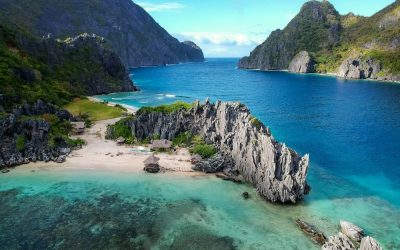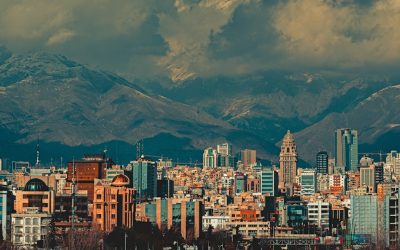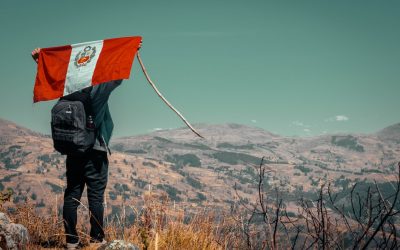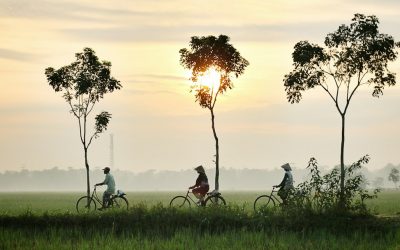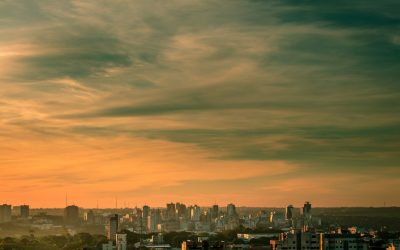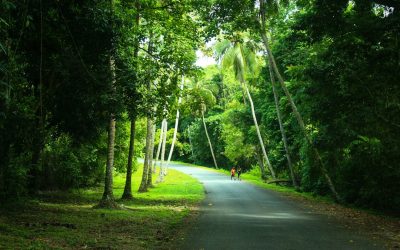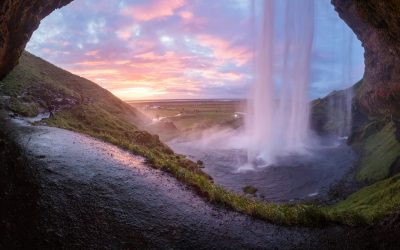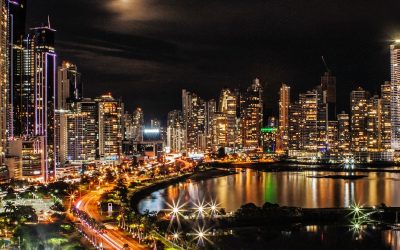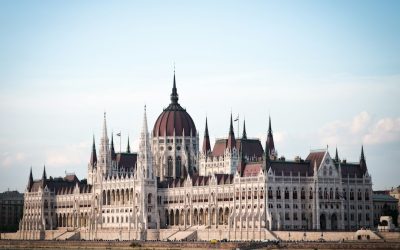World Geography
Geography is the study of the Earth’s landscapes, environments, and the relationships between people and their surroundings. It encompasses both the physical aspects of the Earth, such as its landforms, bodies of water, and climate, as well as the human aspects, including population distribution, cultures, and economies. World geography is a broad field that seeks to understand the complexities of our planet and how humans interact with it. By studying world geography, we can gain a deeper appreciation for the diversity of our planet and the interconnectedness of its various regions.
Geography is a multidisciplinary field that draws on elements of physical science, social science, and humanities. It involves the use of maps, spatial analysis, and geographic information systems (GIS) to understand the Earth’s surface and the processes that shape it. World geography also encompasses the study of human geography, which examines the ways in which people and their activities are distributed across the Earth. By understanding world geography, we can better appreciate the environmental, cultural, and economic challenges facing different regions of the world. This knowledge is crucial for addressing global issues such as climate change, resource management, and international development.
The Five Oceans and Seven Continents
The Earth’s surface is divided into five major oceans: the Pacific, Atlantic, Indian, Southern (or Antarctic), and Arctic Oceans. These vast bodies of water play a crucial role in regulating the Earth’s climate and supporting diverse marine ecosystems. The oceans also serve as important transportation routes and a source of food and other natural resources for human societies around the world.
In addition to the oceans, the Earth’s landmasses are divided into seven continents: Africa, Antarctica, Asia, Europe, North America, Australia (or Oceania), and South America. Each continent has its own unique physical and cultural characteristics, shaped by millions of years of geological processes and human history. From the deserts of Africa to the rainforests of South America, the continents offer a rich tapestry of landscapes and environments for exploration and study.
Major Mountain Ranges and Deserts
The Earth’s surface is also marked by major mountain ranges and deserts that have shaped the planet’s physical and cultural landscapes. The Himalayas, for example, are the highest mountain range in the world and are home to diverse ecosystems and cultures in countries such as India, Nepal, and Bhutan. The Andes in South America, the Rockies in North America, and the Alps in Europe are other prominent mountain ranges that have influenced human settlement patterns and economic activities.
Deserts cover about one-third of the Earth’s land surface and are characterized by low precipitation and extreme temperatures. The Sahara Desert in Africa is the largest hot desert in the world, while the Gobi Desert in Asia is one of the largest cold deserts. Deserts are not only home to unique flora and fauna but have also been important trade routes and cultural crossroads throughout history.
Climate Zones and Biomes
The Earth’s climate is influenced by a variety of factors, including latitude, altitude, ocean currents, and prevailing winds. As a result, the planet is divided into different climate zones, each with its own characteristic weather patterns and ecosystems. The equator, for example, experiences a tropical climate with high temperatures and heavy rainfall, while the polar regions have a cold and dry climate.
These climate zones give rise to different biomes, or large ecological areas characterized by distinct plant and animal communities. The tropical rainforest biome, found near the equator, is home to a diverse array of species and is vital for regulating the Earth’s climate. The grasslands biome, found in regions such as the African savannah and North American prairies, supports grazing animals and has been important for human agriculture throughout history.
Human Geography and Population Distribution
Human geography examines the ways in which people and their activities are distributed across the Earth’s surface. It encompasses topics such as population growth, migration patterns, urbanization, and cultural diversity. Understanding human geography is crucial for addressing global challenges such as poverty, inequality, and environmental degradation.
Population distribution is uneven across the world, with some regions experiencing rapid population growth while others are declining. The majority of the world’s population lives in Asia, particularly in countries such as China and India. Urban areas are also growing rapidly, with more than half of the world’s population now living in cities. This trend has significant implications for infrastructure development, resource management, and social inequality.
Historical and Cultural Geography
Historical geography examines how human activities have shaped the Earth’s landscapes over time. It explores topics such as colonialism, trade routes, and the rise and fall of empires. Cultural geography focuses on how human cultures have developed in different regions of the world and how they interact with their environments.
The Silk Road, for example, was an ancient trade route that connected China with Europe and facilitated the exchange of goods, ideas, and technologies across Eurasia. This historical trade route had a profound impact on the development of cultures and economies along its path. Similarly, cultural geographers study how different societies have adapted to their environments through practices such as agriculture, architecture, and religious beliefs.
The Importance of Geographic Knowledge
Geographic knowledge is crucial for addressing global challenges such as climate change, resource management, and international development. By understanding world geography, we can better appreciate the environmental, cultural, and economic challenges facing different regions of the world. This knowledge is crucial for addressing global issues such as climate change, resource management, and international development.
Geographic knowledge also helps us to understand our interconnectedness with other regions of the world. By studying world geography, we can gain a deeper appreciation for the diversity of our planet and the interconnectedness of its various regions. This understanding can foster a sense of global citizenship and empathy for people from different cultures and backgrounds.
In conclusion, world geography is a complex and multifaceted field that encompasses both physical and human aspects of the Earth’s landscapes. By studying world geography, we can gain a deeper appreciation for the diversity of our planet and the interconnectedness of its various regions. This knowledge is crucial for addressing global challenges such as climate change, resource management, and international development. It also helps us to understand our interconnectedness with other regions of the world and fosters a sense of global citizenship.
FAQs
What is world geography?
World geography is the study of the Earth’s landscapes, environments, and the relationships between people and their environments. It encompasses the physical features of the Earth, as well as the human activity that takes place on it.
Why is world geography important?
World geography is important because it helps us understand the world around us. It provides insights into the physical and human processes that shape our planet, and helps us make informed decisions about how to interact with our environment.
What are the main branches of world geography?
The main branches of world geography include physical geography, which focuses on the Earth’s natural features and processes, and human geography, which examines the relationships between people and their environments.
How does world geography impact our daily lives?
World geography impacts our daily lives in numerous ways, from influencing the weather and climate we experience, to shaping the availability of natural resources and influencing the distribution of populations and cultures around the world.
What are some key concepts in world geography?
Key concepts in world geography include location, place, human-environment interaction, movement, and region. These concepts help geographers understand and interpret the world around them.
Exploring the Rich Culture and History of Poland: A Journey Through the Heart of Eastern Europe
Poland, located in Central Europe, is a country with a rich and fascinating history. It is bordered by Germany to the west, the Czech Republic and Slovakia to the south, Ukraine and Belarus to the east, and Lithuania and Russia to the northeast. With a population of over 38 million people, Poland is the ninth-largest country in Europe. The official language is Polish, which is spoken by the majority of the population. Poland’s history and culture have played a significant role in shaping Europe as we know it today. From its medieval beginnings to its modern-day struggles and triumphs, Poland has been at the center of major historical events. The country has faced numerous invasions, partitions, and occupations throughout its history, but it has always managed to maintain its unique identity and spirit. Summary Poland is a country with a rich history and culture. Warsaw, Krakow, and Gdansk are vibrant cities worth exploring. Poland’s history spans from medieval times to modern day. Gothic, Renaissance, and Baroque architecture can be found throughout Poland. Pierogi, Kielbasa, and Bigos are just a few of the delicious dishes to try in Poland. Discovering the Vibrant Cities of Poland: Warsaw, Krakow, and Gdansk Poland is home to several vibrant cities that offer a unique blend of history, culture, and modernity. Warsaw, the capital city, is a bustling metropolis with a rich architectural heritage. The Old Town of Warsaw, a UNESCO World Heritage site, is a must-visit for its beautifully restored buildings and charming cobblestone streets. The Royal Castle and Wilanów Palace are also worth exploring for their historical significance. Krakow, located in southern...
Exploring the Rich Culture and History of Iraq: A Journey Through Mesopotamia
Mesopotamia, which means “land between rivers” in Greek, refers to the region located between the Tigris and Euphrates rivers in modern-day Iraq. It is often referred to as the cradle of civilization because it is believed to be one of the earliest sites of human civilization. Mesopotamia played a crucial role in world history, as it was the birthplace of many important developments and innovations that shaped the course of human civilization. The civilization of Mesopotamia emerged around 3500 BCE and lasted for several millennia until it was eventually conquered by other empires. During this time, the Mesopotamians made significant advancements in various fields such as agriculture, architecture, art, literature, science, mathematics, and trade. They developed complex systems of writing, created impressive architectural structures such as ziggurats, and established a legal system that influenced later civilizations. Summary Mesopotamia is considered the cradle of civilization. The ancient city of Babylon provides a glimpse into the past. The ziggurats of Ur showcase the impressive architecture of Mesopotamia. Mesopotamia has a rich legacy of art, literature, and creativity. The Mesopotamian pantheon features a diverse array of gods and goddesses. The Ancient City of Babylon: A Window into the Past One of the most famous cities in Mesopotamia is Babylon. Located on the banks of the Euphrates River, Babylon was a major political and cultural center in ancient times. The city has a long and rich history that dates back to around 2300 BCE when it was first mentioned in historical records. Babylon is known for its impressive landmarks and structures. One of the most famous is the Hanging Gardens of Babylon, which...
Discovering the Hidden Gems of the Philippines: A British Traveller’s Guide
The Philippines is a country that offers a diverse range of experiences for travellers, making it an ideal destination for British travellers seeking adventure, relaxation, and cultural immersion. With its stunning beaches, vibrant cities, rich history and culture, and warm hospitality, the Philippines has something to offer every type of traveller. From the untouched beauty of Palawan to the bustling streets of Manila, the Cordillera Mountains’ off-the-beaten-path adventures to the pristine beaches of the Visayas, there is no shortage of incredible experiences to be had in this Southeast Asian gem. British travellers should consider visiting the Philippines for several reasons. Firstly, the country boasts some of the most beautiful beaches in the world. With over 7,000 islands, there are endless opportunities for island-hopping, snorkelling, diving, and simply relaxing on white sandy shores. Secondly, the Philippines is known for its warm and welcoming people. Filipinos are known for their hospitality and friendliness towards visitors, making it a pleasant and enjoyable experience for British travellers. Lastly, the Philippines offers a unique blend of cultures and traditions. With influences from Spanish, American, and indigenous cultures, there is a rich tapestry of history and heritage to explore throughout the country. Summary The Philippines is a must-visit destination for British travellers, offering untouched beauty, vibrant culture, and off-the-beaten-path adventures. Palawan is the Philippines’ best island, with stunning natural beauty and opportunities for island-hopping and diving. Manila is a vibrant city with a rich cultural heritage, perfect for first-time visitors looking to explore the Philippines’ history and cuisine. The Cordillera Mountains offer trekking and cultural experiences in the northern Philippines, away from the tourist crowds....
Exploring the Rich Culture and History of Iran: A Journey Through Persia
Iran, formerly known as Persia, is a country with a rich cultural heritage and a history that spans thousands of years. Situated in the Middle East, Iran has been a crossroads of civilizations, with influences from ancient Mesopotamia, Greece, and Central Asia. This diverse cultural background has shaped Iran into a unique and fascinating destination for those interested in exploring its history, art, architecture, cuisine, and more. Exploring Iran’s diverse cultural offerings is not only an opportunity to learn about its rich history but also a chance to appreciate the beauty and intricacy of its art and architecture. From awe-inspiring monuments and mosques to vibrant festivals and delicious cuisine, Iran offers a wealth of experiences that will leave visitors in awe. Summary Iran has a rich culture and history that spans thousands of years. The architecture of Persia is awe-inspiring, with magnificent monuments and mosques. Persian art includes miniatures and calligraphy, showcasing the country’s artistic talent. Iranian cuisine is a delicious blend of flavours and spices, reflecting the country’s diverse cultural influences. The Persian carpet industry is a timeless tradition of beauty and skill, with intricate designs and patterns. The Magnificent Architecture of Persia: Awe-Inspiring Monuments and Mosques Persian architecture is renowned for its grandeur and beauty. It has had a significant influence on modern-day design, with its intricate patterns and use of geometric shapes. The architecture of Persia is characterized by its use of domes, arches, and minarets, which can be seen in famous structures such as the Persepolis and the Sheikh Lotfollah Mosque. Persepolis, located in the city of Shiraz, is an ancient city that was once...
Exploring the Wonders of Peru: A Journey Through the Land of the Incas
Peru, located in South America, is a country known for its diverse geography, rich history, and vibrant culture. From the towering peaks of the Andes Mountains to the lush Amazon rainforest, Peru offers a wide range of natural wonders to explore. The country is also home to ancient civilizations, most notably the Inca Empire, whose legacy can still be seen in the magnificent ruins scattered throughout the country. Tourism plays a significant role in Peru’s economy, attracting millions of visitors each year. The revenue generated from tourism helps support local communities and preserve Peru’s natural and cultural heritage. With its stunning landscapes, archaeological sites, and unique traditions, Peru offers a truly immersive experience for travelers seeking adventure and cultural enrichment. Summary Peru is a diverse country with a rich culture that is worth exploring. The ancient Inca civilization is shrouded in mystery and offers a fascinating glimpse into the past. Peru’s natural wonders, from the Andes to the Amazon, are breathtaking and offer a unique experience. Lima is a vibrant capital city that serves as a gateway to Peru and offers a taste of modern Peruvian culture. Cusco is the heart of Inca civilization and the gateway to Machu Picchu, a majestic and enigmatic Inca citadel. Discovering the Mysteries of the Ancient Inca Civilization The Inca Empire was one of the most advanced civilizations in the Americas before the arrival of the Spanish conquistadors. The empire spanned from Ecuador to Chile and reached its peak in the 15th century. The Incas were known for their impressive architectural skills, agricultural techniques, and intricate social structure. One of the most famous...
Exploring the Wonders of Indonesia: A Journey Through the World’s Largest Archipelago
Indonesia, located in Southeast Asia, is the largest archipelago in the world, consisting of over 17,000 islands. This vast country is known for its stunning natural landscapes, rich cultural heritage, and diverse wildlife. Each island in Indonesia offers a unique experience, from the active volcanoes of Java to the pristine beaches of Bali. With its vibrant cities, lush rainforests, and vibrant festivals, Indonesia is a destination that has something to offer every traveller. Summary Indonesia is a diverse archipelago with over 17,000 islands to explore. From volcanoes to coral reefs, Indonesia boasts a wealth of natural wonders. Indonesia’s rich cultural heritage is evident in its art, architecture, and traditions. Indonesian cuisine is a delicious blend of spices, herbs, and fresh ingredients. Indonesia’s cities and towns offer a vibrant mix of modernity and tradition. Indonesia’s Natural Wonders: From Volcanoes to Coral Reefs One of the most striking features of Indonesia’s geography is its active volcanoes. The country is part of the Pacific Ring of Fire, a region known for its seismic activity. Mount Bromo in East Java and Mount Rinjani in Lombok are two popular destinations for trekking enthusiasts. These volcanoes offer breathtaking views and unique landscapes that are unlike anything else in the world. Indonesia is also home to some of the most diverse and vibrant coral reefs in the world. The Coral Triangle, which includes parts of Indonesia, the Philippines, and Papua New Guinea, is considered the global epicentre of marine biodiversity. The reefs surrounding islands such as Bali and Komodo are teeming with colourful fish, turtles, and other marine life. Snorkelling and diving in these areas...
Discovering the Hidden Gems of Paraguay: A Journey Through South America’s Underrated Destination
Nestled in the heart of South America, Paraguay is often overlooked by travelers in favor of its more popular neighbors, Brazil and Argentina. However, this landlocked country has a rich cultural heritage, stunning natural landscapes, vibrant cities, and a warm and welcoming population that make it a hidden gem waiting to be discovered. In this blog post, we will delve into the many reasons why Paraguay should be on every traveler’s radar. Paraguay is located in the center of South America, bordered by Brazil to the east and northeast, Argentina to the south and southwest, and Bolivia to the northwest. It has a fascinating history that dates back thousands of years, with indigenous cultures flourishing long before the arrival of Spanish colonizers in the 16th century. Despite its historical significance and natural beauty, Paraguay remains relatively unknown to international tourists. In this blog post, we will explore Paraguay’s rich cultural heritage, from its indigenous roots to the influence of Spanish colonization. We will also delve into the country’s diverse landscapes, from the vast Chaco region to the Pantanal wetlands. Additionally, we will highlight Paraguay’s vibrant urban scene, its unique cuisine, fascinating history, warm and welcoming people, hidden gems and lesser-known destinations, adventure travel opportunities, and provide practical tips for planning a trip to this enchanting country. Summary Paraguay is a hidden gem of South America with a rich cultural heritage and natural wonders to explore. Paraguay’s cultural heritage is a blend of indigenous and colonial influences, making it a unique destination. From the Chaco to the Pantanal, Paraguay offers a diverse range of natural wonders to explore. Asunción and...
Exploring the Vibrant Culture and Rich Heritage of Incredible India
India is a land of diversity and heritage, with a rich tapestry of culture and traditions that have been passed down through generations. From its vibrant festivals to its ancient temples, from its culinary delights to its spiritual practices, India offers a treasure trove of experiences for those who seek to explore its cultural heritage. In this article, we will delve into the colourful festivals, artistic treasures, culinary delights, spiritual legacy, architectural marvels, musical heritage, traditional crafts, natural wonders, and modern innovations that make India truly incredible. Summary India is a land of diversity and heritage, with a rich cultural history. The colourful festivals of India celebrate life and spirituality and are a sight to behold. India’s artistic treasures range from ancient temples to modern museums, showcasing the country’s creativity and innovation. The culinary delights of India offer a journey through spices and flavours, with something to suit every palate. India’s spiritual legacy is evident in practices such as yoga and meditation, which have gained popularity worldwide. The Colourful Festivals of India India is known for its vibrant and lively festivals that are celebrated with great enthusiasm and fervour. One of the most famous festivals is Holi, also known as the Festival of Colors. During Holi, people come together to throw coloured powders and water at each other, symbolizing the victory of good over evil and the arrival of spring. Diwali, or the Festival of Lights, is another significant festival in India. It celebrates the victory of light over darkness and good over evil. During Diwali, people light oil lamps and candles, decorate their homes with colourful rangoli...
Exploring the Cultural Riches of Papua New Guinea: A Journey Through the Land of a Thousand Tribes
Papua New Guinea is a country located in the southwestern Pacific Ocean. It is known for its stunning natural beauty, diverse cultures, and rich history. The country is made up of the eastern half of the island of New Guinea, as well as numerous smaller islands. Papua New Guinea has a population of over 8 million people, with more than 800 different languages spoken throughout the country. The history of Papua New Guinea dates back thousands of years, with evidence of human habitation in the region dating back to at least 50,000 years ago. The country has a rich cultural heritage, with indigenous communities that have maintained their traditional way of life for centuries. These communities have a deep connection to the land and the natural environment, and their traditions and customs are an integral part of Papua New Guinea’s identity. Preserving and promoting Papua New Guinea’s cultural heritage is of utmost importance. The country’s diverse cultures and traditions are a source of pride for its people and contribute to its unique identity. By preserving and promoting these traditions, Papua New Guinea can not only maintain its cultural heritage but also attract tourists who are interested in experiencing its rich history and traditions. Summary Papua New Guinea is a land of diversity and tradition, with a rich cultural heritage. The people of Papua New Guinea are a mosaic of cultures and languages, with over 800 languages spoken. Traditional art and crafts are an important part of Papua New Guinea’s cultural heritage, with unique styles and techniques. Music and dance are integral to the rhythms of Papua New Guinea’s tribal...
Discovering the Wonders of Iceland: A Journey Through the Land of Fire and Ice
Iceland, known as the “Land of Fire and Ice,” is a Nordic island country located in the North Atlantic Ocean. Despite its name, Iceland is not covered in ice, but rather boasts a diverse landscape of volcanoes, geysers, hot springs, glaciers, and waterfalls. With a population of just over 350,000 people, Iceland is one of the least densely populated countries in the world. Iceland has a rich history dating back to the settlement by Norse explorers in the 9th century. The country was ruled by Norway and later Denmark before gaining independence in 1944. Today, Iceland is known for its progressive society, renewable energy sources, and stunning natural beauty. Iceland has become an increasingly popular travel destination in recent years, attracting visitors from all over the world. The country’s unique geological features, such as geysers and glaciers, make it a haven for nature lovers and adventure seekers. Additionally, Iceland’s capital city Reykjavik offers a vibrant cultural scene with its museums, art galleries, and lively nightlife. Whether you’re looking to explore the great outdoors or immerse yourself in Icelandic culture, there is something for everyone in this captivating country. Summary Iceland is a land of contrasts, with natural wonders like geysers and glaciers alongside modern cities like Reykjavik. Witnessing the Northern Lights in Iceland is a once-in-a-lifetime experience that shouldn’t be missed. The Icelandic horse is a unique breed that’s worth discovering, and the Blue Lagoon is a must-visit geothermal spa. The Golden Circle tour takes visitors to some of Iceland’s most famous attractions, while local cuisine offers a chance to try new delicacies. Adventurous travellers can enjoy hiking, glacier...
Discovering the Hidden Gems of Panama: A British Perspective
Panama may not be the first destination that comes to mind for British travellers, but it is a hidden gem that should not be overlooked. Located in Central America, Panama offers a unique blend of natural beauty, rich history, vibrant culture, and cosmopolitan cities. From pristine beaches to dense rainforests, from ancient ruins to modern marvels like the Panama Canal, this small country has something for everyone. One of the reasons why Panama is a great choice for British travellers is its accessibility. With direct flights from London to Panama City, getting to this tropical paradise has never been easier. Additionally, English is widely spoken in Panama, making it easy for British tourists to navigate and communicate with locals. The country also uses the US dollar as its official currency, eliminating the need for currency exchange. Summary Panama is a hidden gem for British travellers, offering stunning beaches, rich history, diverse wildlife, cosmopolitan cities, delicious food and drink, off-the-beaten-path adventures, and fascinating indigenous cultures. The best hidden beaches in Panama are a must-visit for sun-seeking Brits, with options ranging from secluded coves to lively surf spots. Uncovering Panama’s rich history is a journey through time, from the days of pirates to the engineering marvel of the Panama Canal. The best wildlife spots in Panama offer a unique perspective for British travellers, with opportunities to see exotic birds, monkeys, sloths, and more in their natural habitats. Exploring Panama City is a cosmopolitan experience, with a mix of modern skyscrapers, historic landmarks, and vibrant nightlife. The Best Hidden Beaches in Panama: A Guide for Sun-Seeking Brits Panama is home to some...
Discovering the Hidden Gems of Hungary: A Journey Through the Heart of Europe
Hungary, located in Central Europe, is a hidden gem waiting to be discovered by travelers. With its rich history, vibrant culture, delicious cuisine, and stunning natural landscapes, Hungary offers a diverse range of experiences for visitors. From the bustling capital city of Budapest to the lesser-known regions and countryside retreats, there is something for everyone in this captivating country. Some of the popular tourist attractions in Hungary include the iconic Chain Bridge in Budapest, the historic Buda Castle, the thermal baths of Széchenyi and Gellért, and the picturesque Danube River. These attractions showcase the unique blend of architectural styles and cultural influences that Hungary has to offer. However, there is much more to explore beyond these well-known sites. Summary Hungary has many lesser-known regions that are worth exploring, such as the Tokaj wine region and the Northern Uplands. The country has a rich cultural heritage, with influences from the Ottoman Empire, Habsburg monarchy, and more. Hungarian cuisine is delicious and diverse, with dishes like goulash, chimney cake, and langos. Natural wonders in Hungary include Lake Balaton, the Danube Bend, and the Aggtelek National Park. Getting off the beaten path in Hungary can lead to hidden gems like the village of Hollókő and the abandoned village of Györgyfalva. Exploring the Lesser-Known Regions of Hungary While Budapest may steal the spotlight, there are several lesser-known regions in Hungary that are worth exploring. These regions offer a more authentic and off-the-beaten-path experience for travelers. One such region is the Tokaj wine region, known for its world-renowned sweet wines. Visitors can explore vineyards, taste different varieties of wine, and learn about the winemaking...


